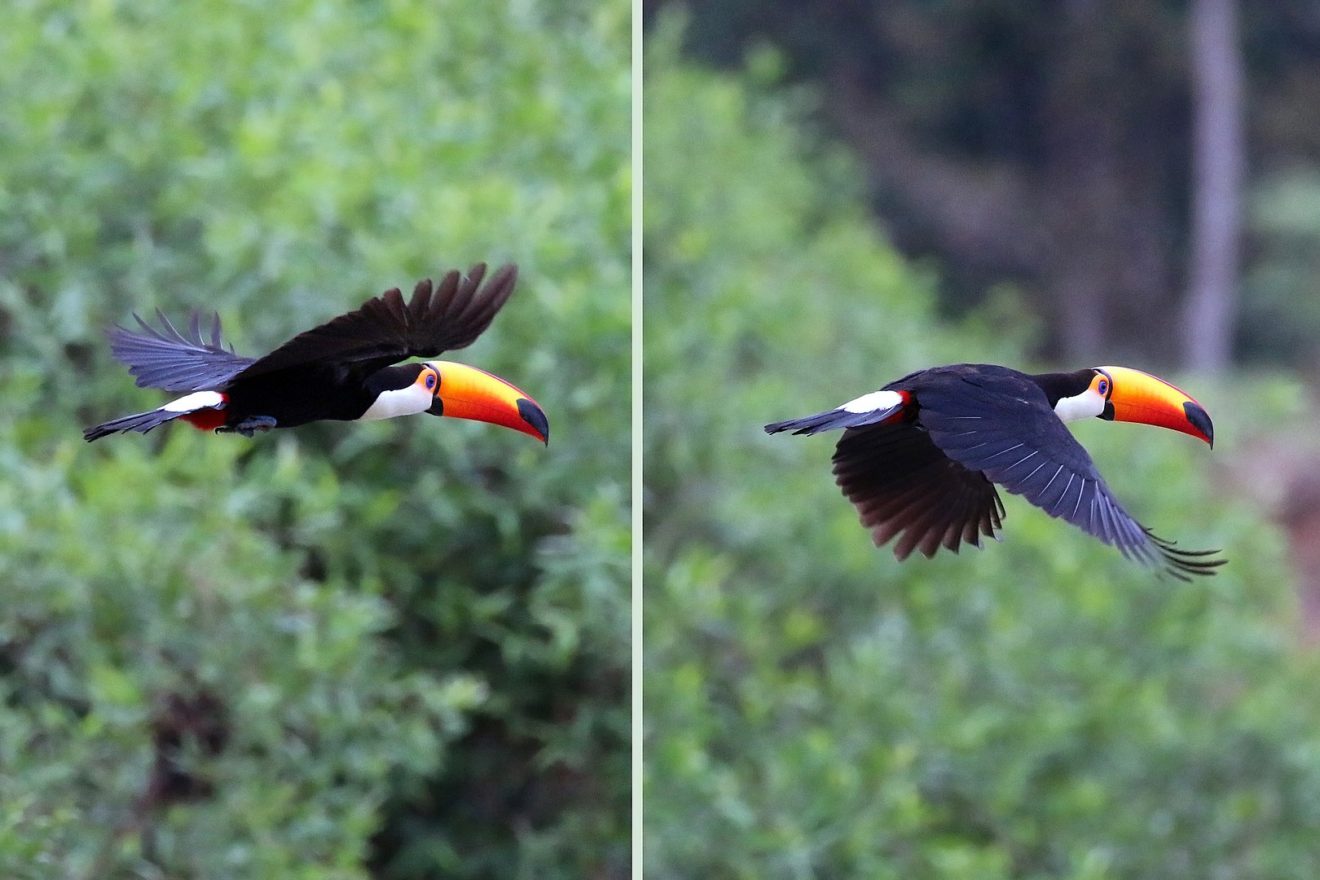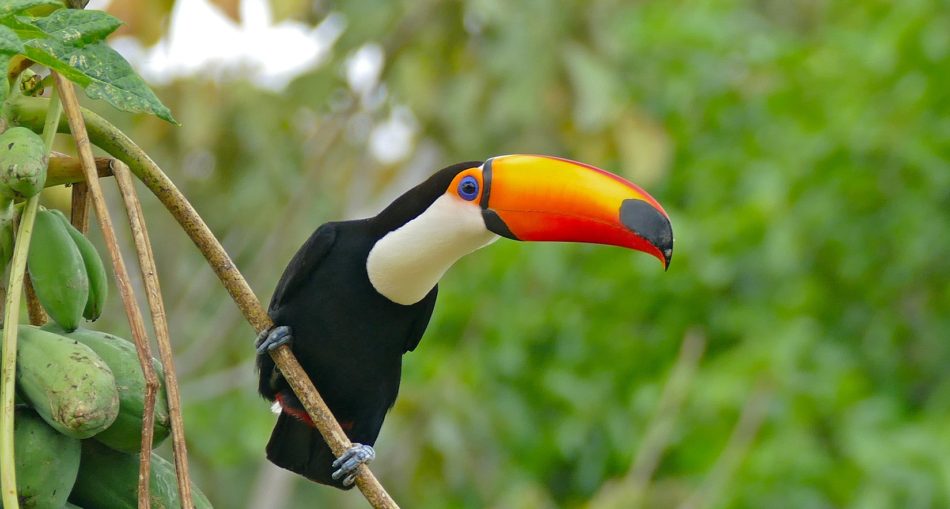What Do You Know About The Toco Toucan?
The largest and best-known of the toucan species is the Toco Toucan (Ramphastos toco). Its oversized, colorful bill has made it one of the world’s most popular birds. These beautiful birds live in South American rainforests and Cerrado savannah. They are native to: Argentina, Bolivia, Brazil, Guyana, Paraguay, Peru and Suriname. The toco toucan can live for 12-20 years in the wild and 18 years in captivity.
Did you know?
Indigenous peoples regard the bird with a sacred eye; they are traditionally seen as conduits between the worlds of the living and the spirits.
Where Does The Toco Toucan Live?
Toco Toucans come from South America. They can be found throughout the majority of Central America and some Caribbean countries such as Guyana.
These birds enjoy a habitat of open forests. They live in woodland, savannahs and other open areas. This adaptation means they have adapted well to the deforestation taking place in South America.
Toco Toucan Appearance
The majority of the toco toucan is coloured black. On the throat, there is a patch of white plumage. The eye is a black ball surrounded by a thin patch of skin that appears blue. Around the blue area, there is a ring of exposed skin which is orange.
One of the most notable features of the toco toucan is its large bill. This bill is around 19cm in size and is comprised of keratin (the same substance as a human hair) which makes it very light. The bill has a small black patch next to the body before becoming orange for the majority. At the tip is another black section.
They measure between 55 and 65cm (22-26inch) and weighs 500 to 876g in size. The female is generally smaller than the male. These toucans have wings measuring 50-119cm (20-47in).
Toco Toucan Diet
Toco Toucans are canopy frugivores whose diet is composed mainly of fruits, but they are considered to be an opportunistic feeder. They also occasionally feed on various types of insects and eggs of other birds, including those of endangered hyacinth macaws (Anodorhynchus hyacinthinus). Their broad geographical range of habitats is due in part to their foraging behavior and their diet of briefly-available fruits.

Toco Tucan By Charles J Sharp – Own work, from Sharp Photography, sharpphotography, CC BY-SA 4.0, https://commons.wikimedia.org/w/index.php?curid=44158718
Toco Toucan Behavior
Toco Toucans feed either individually or in small flocks in the canopy. They tend to hop more than they fly. Their bright colors provide good camouflage in the dappled light of the rainforest canopy. The birds keep up a racket of vocalizations—mainly grunting and snoring sounds—that are often compared to the croaking of frogs.
Toco Toucan Reproduction
The breeding season for toco toucans occurs in the spring. Tree cavities are the typical nesting site where a single clutch of 2 to 4 eggs are laid by the female. They breed yearly and have altricial young. The hatchlings are bare-skinned, close-eyed, and helpless until approximately 6 to 8 weeks later. At this time, the young begin to develop their characteristic beak and will soon fledge. Toco toucans become sexually mature in 3 to 4 years.
Both parents take turns incubating the eggs in the small cavity of a tree where the nest is situated. The young remain in the nest for about 6 to 8 weeks.

By Charles J Sharp – Own work, from Sharp Photography, sharpphotography, CC BY-SA 4.0, https://commons.wikimedia.org/w/index.php?curid=44158717
Toco Toucan Conservation Status
These iconic birds are listed as “least concern” by the International Union for the Conservation of Nature because they occupy such a large range. The species’ overall numbers, however, are declining. They are hunted for food and for the pet trade, where their bright colors and intelligence make them popular.
Note:
Although the colorful characteristics of toco toucans provide adequate camouflage in the forest canopy, common predators include jaguars (Panthera onca), snakes (order Serpentes), coatis (Nasua and Nasuella species), and eagles (Accipitridae.
Little Known Facts Of The Toco Toucan
- The toucan’s beak is serrated like a knife, to tear apart its food.
- The toco toucan’s bill accounts for almost half its length.
- Toucans have a feather-like tongue that helps to flick food down their throats.
- Although scientists have yet to discover the exact function of such a large bill, they believe it may play an important role in the courtship display and as a defensive weapon.
- When toucans sleep, they turn their heads so that their long bill rests on their back and their tail is folded over their head. The bird becomes a ball of feathers. Often found in abandoned tree hollows or old woodpecker holes, 5–6 adults may sleep in one hole!
Watch This: The Toco Toucan
The Toco Toucan
As stated at the beginning of the article, toco toucans are the largest and the best known of the toucan species. They are found in the South American rainforests and are native to Guyana, Brazil to name a few. Their diet primarily composed of fruits and insects.
Article References:
- https://www.nationalgeographic.com/animals/birds/t/toco-toucan/
- https://neotropical.birds.cornell.edu/Species-Account/nb/species/toctou1/distribution
- https://seaworld.org/animals/facts/birds/toco-toucan/
- https://animalcorner.co.uk/animals/toco-toucan/
- https://theanimalfacts.com/birds/toco-toucan/
- https://animaldiversity.org/accounts/Ramphastos_toco/
- https://www.animalspot.net/toco-toucan.html







